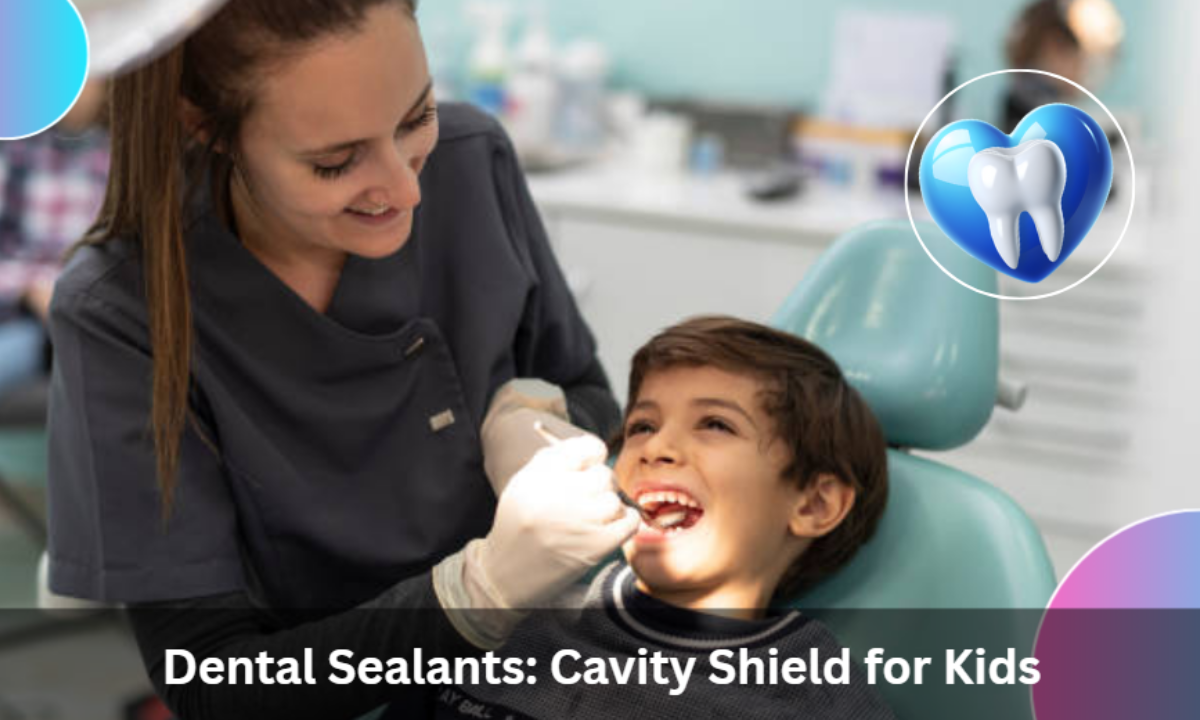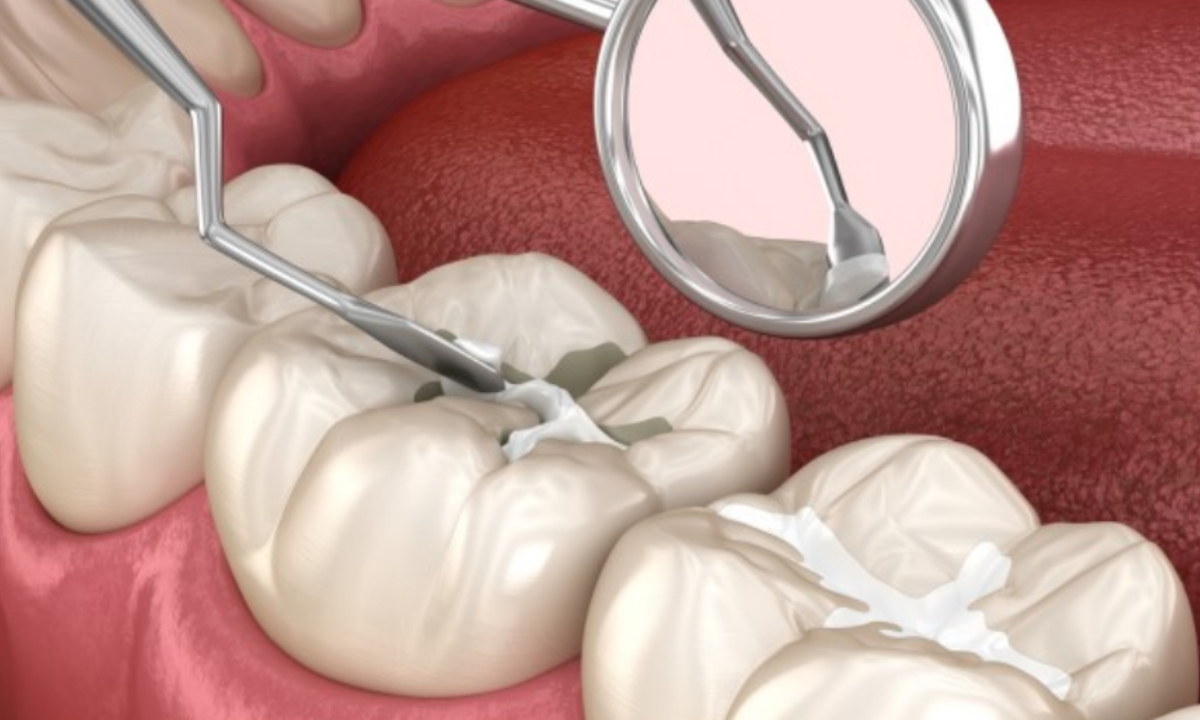As a pediatric dentist at Growing Smiles Dental Clinic in Whitefield, I am often asked: How do dental sealants protect children’s teeth from cavities? In this post, I will walk you through exactly how sealants act like a shield, how the process works, and when they are beneficial.
When we talk about cavities, we refer to tooth decay that progresses into a hole or lesion in the enamel, caused by acids produced by bacteria that feed on sugars. (That’s the cavity’s meaning in clinical terms.) Sealants help stop that process before it begins.
What Are Dental Sealants?
Dental sealants are ultra-thin protective coatings, usually made of resin-based or glass ionomer materials, that we apply to the chewing surfaces (the pits and fissures) of the back teeth, molars and premolars.
These grooves trap food and bacteria. Toothbrush bristles struggle to reach them. When sealants fill and cover these fissures, they block bacteria and acid from getting in. This “seals off” vulnerable spots and creates a smoother, easier-to-clean surface.
In simple terms, sealants act like a raincoat for your child’s teeth, guarding against the elements (acid, bacteria, food debris) that could lead to cavities.
Why Are Sealants Especially Useful for Children?
The chewing surfaces of newly erupted permanent molars are especially vulnerable to decay. Applying sealants soon after eruption offers the best protection.
Studies show that sealants can prevent up to 80% of cavities in the back teeth for the first two years, and continue to protect (about 50%) up to four years.
In children, pits and fissures are the site of almost 90% of tooth decay (cavities) in posterior teeth, making sealants very efficient.
Because kids sometimes struggle with perfect brushing technique, especially in those grooves, sealants give them that extra defense.
Dental Sealants Material
We use two main types of dental sealants material:
- Resin-based sealants: These are the most commonly used. They bind strongly to enamel after etching, creating a durable, long-lasting barrier.
- Glass ionomer sealants: These release fluoride over time, which can help remineralize adjacent enamel areas. They’re somewhat more tolerant of moisture during placement.
Each has pros and cons, and as your dentist, I will choose the material based on the child’s risk of cavities, ability to stay dry during application, and tooth anatomy.
Dental Sealants Procedure (Application Steps)
Here’s how I conduct the dental sealants procedure in my practice at Growing Smiles Dental Clinic:
1. Examination & Cleaning
First, I examine the tooth for any early signs of decay and thoroughly clean the grooves of plaque and debris.
2. Drying & Isolation
The tooth is dried out, and we isolate it (often with cotton rolls or rubber dams) to ensure moisture does not interfere with bonding.
3. Etching the Surface
A mild acidic gel (etchant) is applied to the enamel surface, creating microscopic roughness so the sealant can adhere better.
4. Rinse & Dry Again
We rinse off the etchant and dry the surface thoroughly, checking for a chalky, etched appearance.
5. Apply the Sealant
The sealant material is painted into the grooves and fissures, spreading into all the nooks.
6. Curing / Hardening
We use a curing light (for resin sealants) to harden the material in seconds. Some sealant variants cure on their own.
7. Check the Seal & Occlusion
After curing, I check to ensure the sealant properly flows over the grooves and isn’t interfering with the bite. I may lightly polish or adjust if needed.
The entire process takes just a few minutes per tooth, is painless, and usually requires no anesthesia.
How Sealants Protect: Acting as a Shield
Once in place, sealants function as a physical barrier. They block food particles, bacteria, and acid from lodging in the pits and fissures, areas where decay usually begins. This shield prevents the initial demineralization that leads to cavities.
Even if tiny gaps develop over time, the smooth surface left behind makes cleaning easier and reduces the chance of bacteria colonizing.
However, sealants are not a substitute for brushing, flossing, and fluoride use. They’re part of a preventive toolkit, not a standalone defense.
When Do We Recommend Sealants?
At our clinic, we recommend sealants especially when:
- A child’s first permanent molars or premolars have just erupted.
- The child has a higher risk of tooth decay (history of cavities, sugary diet, irregular brushing).
- Deep grooves and fissures are visible in the back teeth.
- We want to protect teeth early rather than repairing cavities later.
We also check sealants periodically (annual check-ups) to ensure they are intact; we reapply or repair them if needed.
Cavities Treatment vs Sealants
If a tooth already has a cavity, sealants alone won’t be enough. In those cases, we move to cavities, teeth treatment like fillings or restorations. Sealants are a preventive measure, not a cure.
When decay is superficial (incipient), sometimes a sealant may help arrest the process, but this depends on careful evaluation by the dentist.
Restorative procedures involve removing the decayed parts and placing a filling. But once a tooth is filled, we can’t use a sealant there, so prevention is always preferable.
Why Choose Us in Whitefield?
As a pediatric dentist in Whitefield, I see many families who want the best dental care for their children. At Growing Smiles, the best dental clinic in Whitefield, we specialize in child-friendly preventive treatments, including sealants, to avoid the discomfort and cost of cavities later.
We strive to be a trusted dentist in Whitefield and among the best dental clinics in Whitefield, especially for pediatric care. Our team emphasizes gentle, informed care rooted in prevention and education.
Conclusion
As your trusted pediatric dentist at Growing Smiles Dental Clinic, I believe in empowering parents with knowledge and keeping kids’ smiles healthy. Dental sealants offer an intelligent, pain-free way to shield back teeth from cavities. When applied at the right time, with proper technique and follow-up, they dramatically reduce decay risk. In my practice, I recommend sealants early, monitor them regularly, and pair them with good oral hygiene to give children the strongest defense against cavities.
Let me know if you would like me to schedule a check-up or sealant assessment for your child. We’d be happy to protect their smiles here in Whitefield.
Frequently Asked Questions (FAQs)
Q: Do dental sealants hurt?
No. The dental sealants application is painless and requires no drilling or injections. It’s a gentle procedure.
Q: How long do sealants last?
Sealants often last 5 to 10 years, though they may wear or chip. We review them at regular check-ups and repair or reapply as needed.
Q: Can sealants be applied to baby teeth?
Sometimes, yes, if baby molars have deep grooves and are at risk of decay. But more commonly, we apply sealants when permanent teeth erupt.
Q: What if a child already has a cavity?
If decay is present, we usually treat it with fillings or restorations. Once a tooth is filled, it’s no longer eligible for a sealant.
Q: Are sealants safe?
Yes, sealants are widely accepted as safe. The materials (resin or glass ionomer) are biocompatible. Sealants help prevent up to 80% of cavities in treated surfaces over two years.
Q: What role do pediatric dentists in Whitefield play?
Pediatric dentists like me specialize in children’s oral care. We understand their growth, behavior, and preventive needs, making us well-equipped to handle dental sealants, cavity treatment, and preventive strategies suited to kids.


